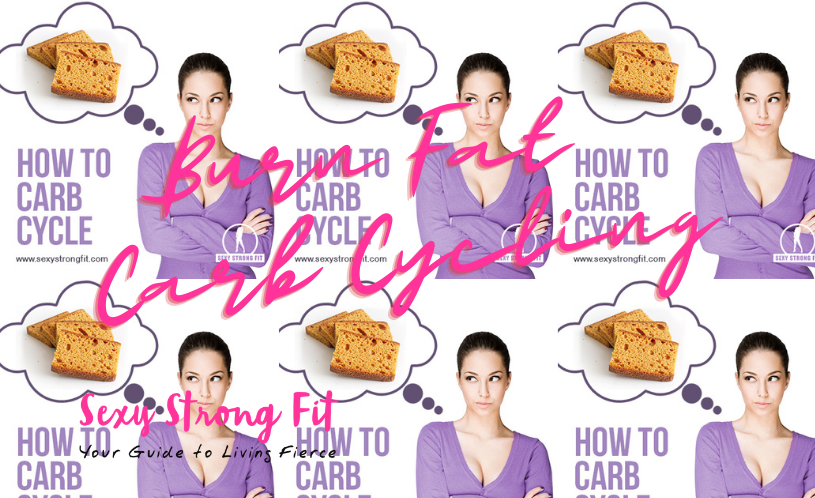Looking for a fat burning diet to get your body into high gear? With summer fast approaching, the time has come to cut calories and put some restrictions on that diet. Sure, you can simply clean it up, reduce those cheat meals, or cut back on your carbs but chances are if you’re not taking your diet as seriously as your workouts, your results will progress slower than you like. The right diet can make the difference between wanting to show off your beach body to covering it with a towel. Not sure which diet will suit your needs? Read up on four popular fat burning diets, and how you can use them to meet your bikini goals this summer.
4 Fat Burning Diets for Your Summer Beach Bod!
Intermittent Fasting
What is Intermittent Fasting?
Fasting is nothing new, for generations – people have been fasting, just not for the sole purpose of weight loss. The body is in either a state of feeding or fasting. Most people spend the majority of their time in the fed state, not allowing significant amount of time to burn through the calories they packed in throughout the day.
The body is designed to store fat for later use and when we don’t eat the body accesses this storage as a source of fuel. Research shows that fasting for at least 18 hours, will result in accessing the maximum amount of fat and will start to level off after 30 hours.
Research also supports the fact that intermittent fasting doesn’t disrupt the metabolism and that your metabolism is more of a result of how much lean body mass you are holding and the higher your metabolism.
How Do You Use Intermittent Fasting?
Intermittent Fasting is one of the easiest fat burning diets to follow. Perform a fast for a period of 24 hours, once every 3 to 5 days. Alternatively, fasting for shorter periods daily or every other day can also be effective. Fasting lowers your intake of calories over the week, resulting in a caloric deficit and accessing fat as fuel. Intermittent Fasting can be used with any diet you are currently following. Perform the fast and when you come off the fast, remember to continue with your normal eating habits. You will no doubt be hungry, but it is important not to binge, and eat those calories you just missed all back.
What Can You Expect?
Intermittent Fasting isn’t for everyone. The long hours of calorie deprivation, can lead to low energy levels, fatigue and headaches, which can make the rest of life a little difficult. Weight loss will result at the normal rate of 1 to 2 pounds per week, although you may weigh less during your fast because your body has shed excess water or food in your system.
Carb Cycling
What is Carb Cycling?
Carb cycling is a diet plan that switches between a period of low and high carbohydrates. During the low carb phase, the body depletes its stores of muscle glycogen – which is the storage form of carbs. After the body depletes its glycogen, it has no choice but to switch to alternate forms of energy – such as fat. On the high carb phase, you refill lost muscle glycogen, which helps stimulate the insulin response, and delivers lost nutrients to the muscles where they can be stored and utilized once again. This constant switch between low and high carb phases helps to up-regulate the metabolism keeping both fat burning and muscle building hormones responding.
How Do You Use Carb Cycling?
The first step to carb cycling is to determine how many calories you should be eating, and then determine the amount of each macronutrient you need to eat during the low and high carb phase. Generally speaking, to lose weight use a caloric intake that is 10 to 12 times your current weight.
For low carb days set your protein intake to 40 to 50% of your calories, carbs should be set to 20% or less, and fats will make up the remaining. On high carb days your macronutrients will change. Protein intake can be set to 30 to 40%, while carbs should take up at least 50% and fat will be set to less than 20%. This shift can create a super compensation of glycogen causing an increase in lean muscle metabolism – leaner body versus skinny fat!
These macronutrient ratios and the number of days in your cycle can shift based on your metabolism, how active you are and how your body responds to carbs. Start by performing one high carb day every 4 to 7 days for the first 4 to 8 weeks, then shift to performing one high carb day every 3 to 5 days.
What Can You Expect?
Traditional low carb diets do work for fat burning, but can often cause severe cravings, depleted energy levels and strength. Not to mention, long periods on a low carbohydrate diet plan can result in metabolic slow down, a decrease in thyroid activity and a decrease in hormones that can stimulate lean muscle development.
Cycling between a low and high carb diet helps to stimulate the metabolism, decrease cravings and keeping energy levels where they need to be. While low carb days promote fat metabolism, encouraging fat utilization, high carb days promote the muscle metabolism, encouraging lean body development. High carb days can also make you feel more energetic and psychologically give you the stamina to keep on going until your high carb day.
Ketogenic Diet
What is the Ketogenic Diet?
Originally made popular by bodybuilding guru Dan Duchaine, Ketogenic diets focus on a diet that is high in protein and fat and delivers very low carbohydrate content. Carbohydrates are kept low enough to switch the body from burning carbs as its main energy source to using protein and fat – switching the body into a state of ketosis. When carb sources are low, the liver starts to convert fat in the body and the diet into ketone bodies, which can power our brain and the body in replace of glucose.
How Do You Use A Ketogenic Diet?
Traditional ketogenic diets require a fat to protein ratio of 4:1, but 3:1 has also become popular, with carbs being negligible. This means you would need to follow a diet that is roughly 60 to 70% fat, 30% protein, and less than 10% coming from carbs. This can be accomplished by eating higher fat meats, nuts, and good for you fats such coconut oil or olive oil and eliminating all starchy carbs from sources such as oatmeal, whole grains, fruit and of course pasta and rice.
To get into ketosis takes 2 to 3 days depending on your activity level, metabolism, and how well you store and hold on to your muscle glycogen. How long you can remain on the ketogenic diet is more a function of your ability to withstand a lack of carbs. Ideally, reserve a carb up or cheat day for once every 7 to 14 days depending on how much fat you want to lose.
What Can You Expect?
Ketogenic diets can be tough. They deplete energy levels, cause severe carb cravings and can lead to brain fog, which can make it difficult to get through workouts or perform daily tasks properly for that matter! However, the strictness of this diet can lead to serious results, causing quick fat loss. In one 4-week study, subjects following a ketogenic diet (4% carbohydrate) lost significantly more weight, versus those following a medium carbohydrate diet (35% carbohydrate).
Ketogenic diets are best used on the short-term to achieve maximum results. Consider following a keto diet for 4 to 8-weeks. Long-term use is not recommended as low levels of carbs for an extended period of time can lead to extreme fatigue, low energy levels and muscle loses.
Flexible Diet or Macro Diet
What is Flexible Dieting?
Flexible Dieting, also known as If It Fits Your Macros (IIFYM) is a diet based on focusing more on the macronutrient number and less on the nutritional value of the food. You still need to eat less, which means creating a caloric deficit. Majority of the food on your diet needs to be from clean sources including whole natural fresh foods, and should be high in fiber, while about 20% can be from your favorite treats. Basically the idea is that you can have your cake and eat it too! Research has shown that those who follow flexible diets, eat less, lose more weight and generally have better moods, and can sustain diets for longer than those who are on more rigid diets.
How Do You Use Flexible Dieting?
After you have determined how many calories you need to eat to lose weight, which is generally 10 to 12 times your body weight, the next step is to figure out your macronutrients. Use a ratio aimed at fat loss, 40 to 50% of calories from protein, 20% to 30% from carbs and 20 to 30% from fats. Split these calories out over 4 to 6 meals for the day.
The next step and perhaps the most exciting part of the diet is choosing the macros that you want. Stick to about 80% to 90% of your food choices from whole sources including fresh fruit, vegetables, non-starchy vegetables, good for you fats, and lean sources of protein. The remaining 10 to 20% can be from not so good choices like your favorite treats, or greasy favorites. Flexible dieting is also about maintaining a high dietary fiber intake, which can help stabilize blood glucose levels.
What Can You Expect?
The best part of flexible dieting is that it is sustainable for the long run. Providing small provisions of ‘treats’ or bad food allows for not only psychological satisfaction, but also prevents you from having severe energy crashes or craving foods that you would normally abstain from on a diet. That also means you need to exercise some restraint, which can be difficult for some to stick with.
Until Next Time,
Be Fierce & Rule the World,
Lauren Jacobsen
References:
Halton, T., Hu, F. The Effects Of High Protein Diets On Thermogenesis, Satiety And Weight Loss: A Critical Review. 2011. J Am CollNutr. 23 (5): 373-385.
Heilbronn LK, Smith SR, Martin CK, Anton SD, Ravussin E. Alternate-day fasting in nonobese subjects: effects on body weight, body composition, and energy metabolism. 2005. Am J ClinNutr. 81(1): 69-73.
Johnstone AM, et al. Effects of a high-protein ketogenic diet on hunger, appetite and weight loss in obese men feeding ad libitum.Am J ClinNutr. 2008. 87(1): 44-55.
Jonsson T, Granfeldt Y, Lindeberg S, Hallberg AC. Subjective satiety and other experiences of a Paleolithic diet compared to a diabetes diet in patients with type 2 diabetes. Nutr J. 2013. 12:105.
Kowalski LM, Bujko J. Evaluation of biological and clinical potential of Paleolithic diet.RoczPanstwZaklHig. 2012. 63(1): 9-15.
Meule A, Westenhofer J, Kubler A. Food cravings mediate the realtioniship between rigid but not flexible control of eating behavior and dieting success. 2011. Appetite. 57 (3): 582-4.
Rhyu HS, Cho SY.The effect of weight loss by ketogenic diet on the body composition, performance-related physical fitness factors and cytokines of Taekwondo athletes. J ExercRehabil. 2014. 10(5): 326-31.
Smith CF, Willamson DA, Bray GA, Ryan DH. Flexible vs. Rigid Dieting Strategies: Relationship with Adverse Behavioral Outcomes. 1995. Appetite. 32(3): 295-305.












